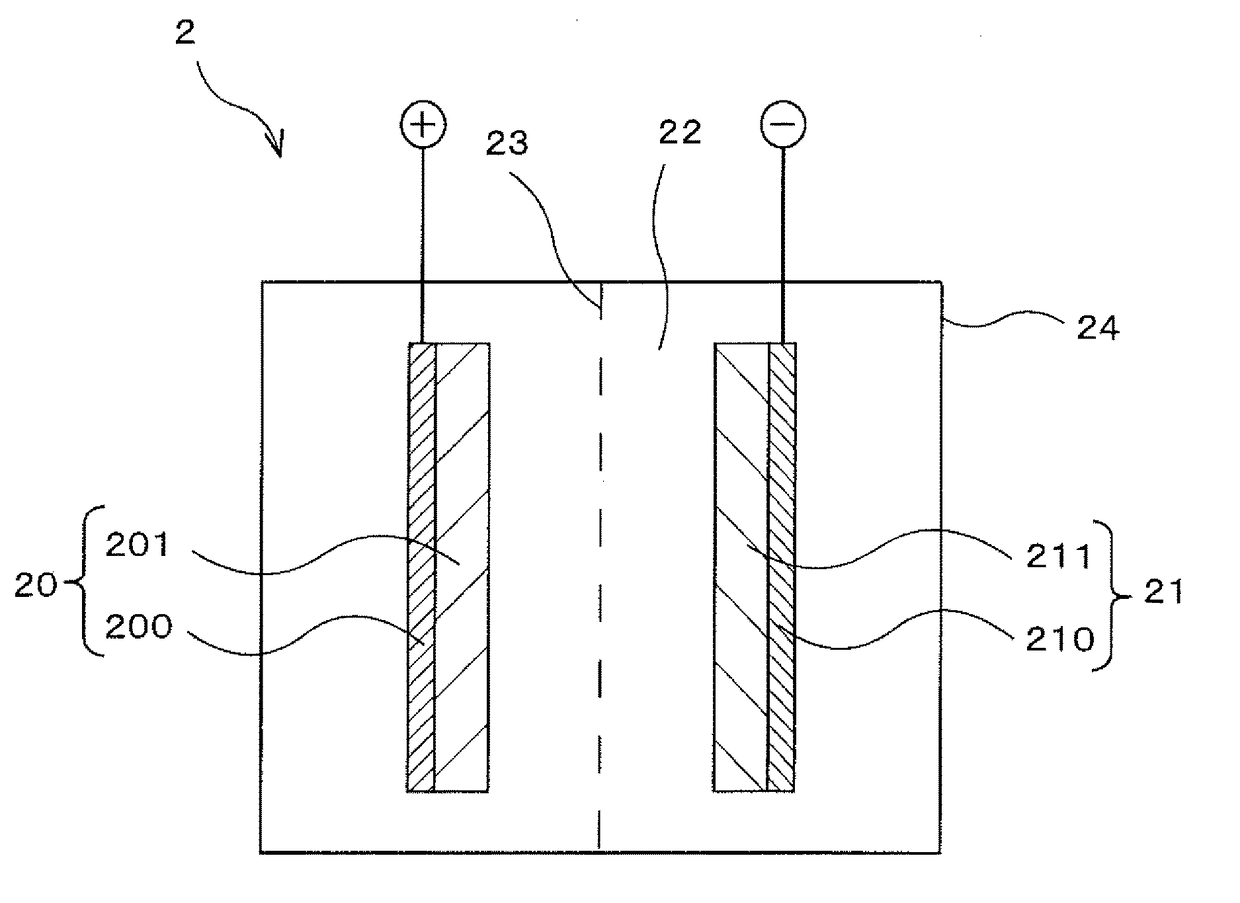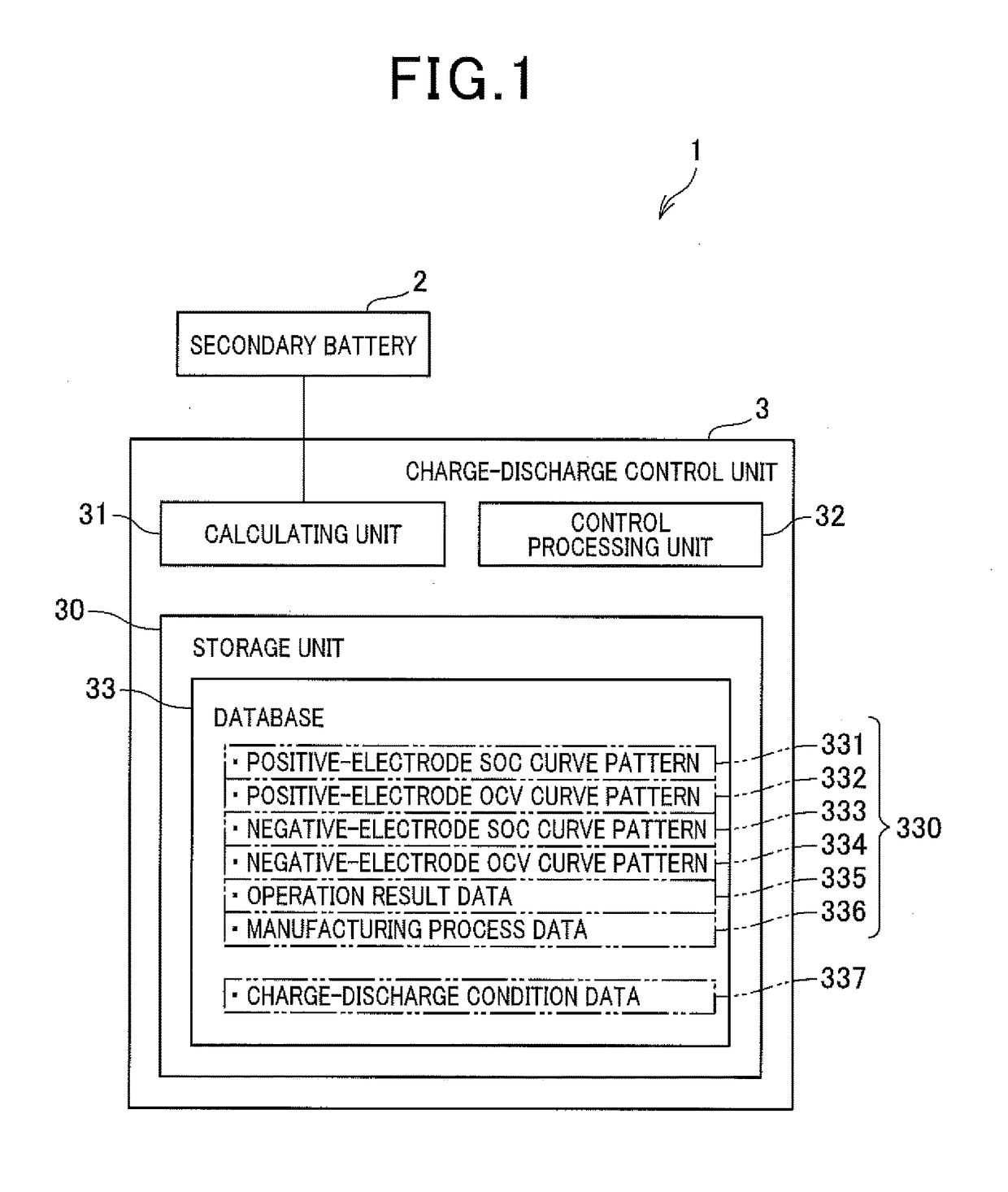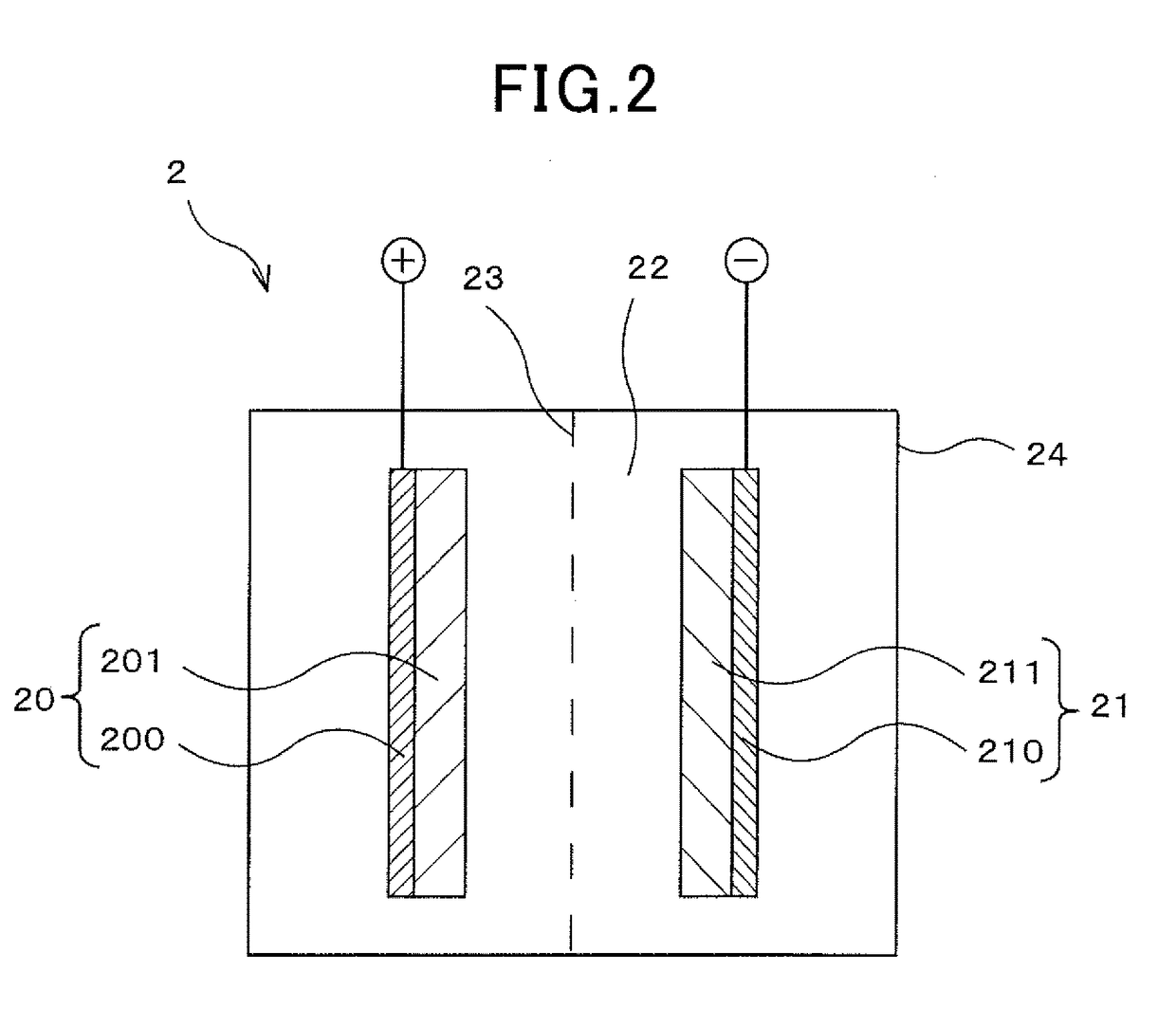Secondary battery apparatus
a secondary battery and battery technology, applied in secondary cell servicing/maintenance, cell components, electrochemical generators, etc., can solve the problems of increasing and increasing the cost of the battery. , to achieve the effect of reducing the performance of the electrode, suppressing the performance of the overall secondary battery, and high battery performan
- Summary
- Abstract
- Description
- Claims
- Application Information
AI Technical Summary
Benefits of technology
Problems solved by technology
Method used
Image
Examples
embodiment
[0021]A secondary battery apparatus 1 according to the present embodiment uses a lithium ion secondary battery as a secondary battery. The secondary battery apparatus 1 according to the present embodiment has a lithium ion secondary battery 2 and a charge-discharge control unit 3. FIG. 1 schematically shows a configuration of the secondary battery apparatus 1 according to the present embodiment.
[Lithium Ion Secondary Battery]
[0022]The lithium ion secondary battery 2 (referred to, hereafter, as a secondary battery 2) has a positive electrode 20 and a negative electrode 21. The secondary battery 2 is charged and discharged by the charge-discharge control unit 3. The configuration of the secondary battery 2 is not limited. The secondary battery 2 can have a configuration similar to that of a conventional lithium ion secondary battery. In addition, the secondary battery 2 may be a single battery or a battery pack combining a plurality of secondary batteries 2. When the battery pack is f...
PUM
| Property | Measurement | Unit |
|---|---|---|
| crystallite size | aaaaa | aaaaa |
| crystallite size | aaaaa | aaaaa |
| crystallite size | aaaaa | aaaaa |
Abstract
Description
Claims
Application Information
 Login to View More
Login to View More - R&D
- Intellectual Property
- Life Sciences
- Materials
- Tech Scout
- Unparalleled Data Quality
- Higher Quality Content
- 60% Fewer Hallucinations
Browse by: Latest US Patents, China's latest patents, Technical Efficacy Thesaurus, Application Domain, Technology Topic, Popular Technical Reports.
© 2025 PatSnap. All rights reserved.Legal|Privacy policy|Modern Slavery Act Transparency Statement|Sitemap|About US| Contact US: help@patsnap.com



